This is a story about how a Minnesota startup utilized one of our great local institutions of higher learning to enhance its business plan and leverage its future. But, what started out as a post limited to that has turned into…well, kinda the whole life story of this startup, going back a few years, and the background of its fascinating founder, Robert Metcalf. [No, not that one, as TechCrunch likes to say.] It’s maybe my longest post ever, but I think you’ll like it.
I first met our homegrown Robert Metcalf, founder of Flyspy, back in May of this year. His company is a new breed of airfare search site that changes the game. (See the sample chart.)  I’d read the original TechCrunch blog post about Robert and his firm, and a followup they did a few months later, and I couldn’t believe Robert and I were located so close by and hadn’t yet met. Within a few days, we did meet, and I was immediately impressed, both with him and the fledgling company. As pure Internet startups go, this looked like one of the most exciting I’d seen in these parts in a long, long time. Certainly since the early ‘Net days of 1995, when I first met J.J. and Jeremy Allaire of Allaire Corp. fame. This harked me back to those days. Pure, unadultered Internet moxie and adrenaline.
I’d read the original TechCrunch blog post about Robert and his firm, and a followup they did a few months later, and I couldn’t believe Robert and I were located so close by and hadn’t yet met. Within a few days, we did meet, and I was immediately impressed, both with him and the fledgling company. As pure Internet startups go, this looked like one of the most exciting I’d seen in these parts in a long, long time. Certainly since the early ‘Net days of 1995, when I first met J.J. and Jeremy Allaire of Allaire Corp. fame. This harked me back to those days. Pure, unadultered Internet moxie and adrenaline. 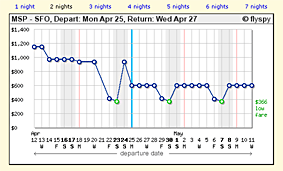 And on top of that, with Flyspy, I was able to immediately identify with what it could do for me personally as well. How many startups have an immediate bond with consumers like that?
And on top of that, with Flyspy, I was able to immediately identify with what it could do for me personally as well. How many startups have an immediate bond with consumers like that?
So, what I decided to do was interview Robert about his experience with Flyspy being a case study for a recent MBA class at the University of Minnesota’s Carlson School of Management. This was after he’d let me sit in on the final class session to hear the presentations of the ten teams. But I wanted the interview to provide background information, too, so I asked him a broad set of questions. Ready for the definitive lowdown on this exciting, new, Minnesota-grown startup? It’s fitting to launch this post on the same day that Robert will be demoing Flyspy at MinneDemo. Here we go….
Tech~Surf~Blog: Robert, first please tell us about your previous experience in the technology community here in Minnesota, prior to your founding of Flyspy.com.
Metcalf: My technology experience goes back to the 1970s. During high school, in Northfield, Minnesota, I regularly took math and computer courses at Carleton College. That’s when I got hooked. I’ve always been intellectually curious, especially around the rigor of software development – defining a problem, working on it, understanding the nuances of “systems,” working on tough problems that a lot of people might give up before solving, and finally producing a tangible piece of work that others can use and enjoy.
For the first part of the 1990s, I did Fortune-50 consulting work. My clients were in California, Iowa, New York City, and Texas, and I was on the road 50 weeks a year. In November 1993, I met with Ed McCracken (CEO of Silicon Graphics) and we talked about the emerging Internet and the impact of a networked society. By the end of the year, I had stopped all consulting work and formed an Internet company, Internet Broadcasting Corporation, here in Minneapolis. [Ed.: Not Internet Broadcasting System, or IBS, based in Mendota Heights, MN.] At first, we developed web sites and then later moved into developing e-commerce sites and Internet applications.
During this time, Silicon Valley held a great allure for me. If you were in the Internet or technology business in the 1990s, then Silicon Valley was, in my opinion, the center of the universe. In 1999, I took a job as a CTO for a startup company in San Francisco. That company was sold to a firm in Los Angeles in 2001. I returned to Minneapolis in 2002 and worked with a group of friends that I’ve always wanted to work with. That company was based in Austin, Texas, but had a St. Paul office. Late in 2002, all development was consolidated in Austin, putting five of us out of work. From 2003 until now I’ve either worked on Flyspy or done consulting work to support Flyspy.
Tech~Surf~Blog: How did Flyspy come about?
Metcalf: In 2003, I went to visit my brother in Williamsport, PA. Williamsport is in the middle of the state and there are 10 or 12 airports you can fly into. No matter which airport you choose, the total travel time is about the same – non-stop and a car trip vs. a one-stop and long layovers. I spent about eight hours researching various date, city, and airline combinations. At some point, my head was swimming from all of the data I encountered. I started to record salient data points in Excel in order to understand the combinatorial explosion problem (multiple departure dates X multiple return dates X multiple web sites X multiple connections, etc.)
That got me to thinking… “Why was this search process so difficult and time-consuming when can I find almost anything with Amazon or Google in a few seconds?”
My intellectual curiosity got the best of me. I decided to spend a weekend researching the problem. After all, how hard could it be to figure out where airfares come from and why the process was so slow? That research turned into nine months of 10-hour days! What I found was an incredibly complex system of players and processes and relationships. It was, and is, easily the most complex industry I’ve encountered.
One day I woke up and understood how the entire system worked. My intellectual curiosity had been satisfied. I had the answer to my question and I knew why the airfare search process was so slow. That day also coincided with getting back to consulting work in order to pay the bills.
Within a few months, my mind went back to working on the problem. I knew what the problem was, and having the skills to devise a solution, I gave up consulting and went back to working on Flyspy for another nine months. At this point I’m almost two years into the process and no one was seen anything. Only a few friends knew what I was up to.
In 2005, I started to show Flyspy to close friends and slowly expanded it out from there. My initial solution was totally wrong, as were the second and third solutions. None was a sustainable business. Iterating through three solutions took about 15 months. The difficult part wasn’t the technology, although that was really, really hard. It was removing a piece of the airline industry puzzle, crafting a solution that no one else had thought about, and replacing the puzzle piece. Everything I touched had to remain the same while the internal workings all changed.
During this time, almost 40 months since I’d started, most friends told me to give Flyspy up and move on to something else. They figured that if the industry hadn’t changed in 30 years, and I hadn’t found a solution in 40 months, then there was no solution. Basically, thousands of others must have thought of this, and worked on it, to no avail.
In February 2006, I was at the end of my wits. I never thought I’d solve the Flyspy puzzle. In order to get my creative juices going again I decided to attend a gathering called “MashUp Camp” in Silicon Valley. My goal was to expose myself, not Flyspy, to a broader audience of people on the cutting edge of technology. I thought that being around them would stir something inside.
MashUp Camp was held on a Monday and Tuesday. On the Sunday evening prior to the event, an informal group of 20-30 participants gathered to drink beer, eat pizza, and show what each other had been working on. Most of the group knew each other, so I felt a bit like an outsider. The group gathered around a big table with a projector. They took turns hooking up their laptops and showing “mash up” applications like WiFi locations overlaid on Google maps, or eBay items alongside Amazon search results for the same product. There was lively discussion around each application.
At the end of the evening, when it appeared that everyone who was going to present had presented, someone asked if there was anything else someone wanted to show. I raised my hand and told them I had developed a new type of airfare search engine, which brought blank stares. I borrowed someone’s laptop and showed Flyspy. I talked for about five minutes and not once did anyone utter even so much as a peep. I felt like no one liked it, because every other showing had prompted a good round of conversation. At the end of showing Flyspy, someone started to clap, and then another joined in, and soon the entire room was in applause.
Someone standing in the back of the room asked if they could include the web site URL in their blog. I told him no if it was going to draw a lot of traffic. Everyone but me snickered. That person was Nik Cubrilovic, who was writing for TechCrunch. I was the only one in the room that had never heard of Nik or TechCrunch. I would later find out that a single mention in TechCrunch would bring 100,000 users to a site in a few hours, resulting in a meltdown. At that point, Flyspy was running a single server that was years old and any type of traffic would have taken the server down.
When I walked into the conference on Monday morning, I was surrounded by people congratulating me. Others wanted their picture taken with me, saying I had created a disruptive power within a billion-dollar industry. I had no idea what they were talking about. It wasn’t until I checked email that I realized that Flyspy was the main article on TechCrunch.
MashUp Camp was about creating applications from other applications. Even though Flyspy isn’t a mashup per se, it took third place in the voting. All day Monday and Tuesday, I was swamped with demo requests and interviews. When I flew back on Tuesday night, I knew I had been rejuvenated and threw everything I had into bringing Flyspy to market.
Tech~Surf~Blog: Could you summarize the current state of your business – where are you with financing, business model definition, timing for your formal beta launch, etc?
Metcalf: Flyspy has been self-financed to date. Recently, I’ve had two written offers and one verbal offer for funding. One offer was the wrong type of partnership. Another required moving to California. The jury is still out on the verbal offer.
As a result of the recent PR, a number of VCs have contacted me. Many assume that the business is fairly well developed — i.e., a management team in place, prior round of funding, developer’s implementing more airlines, cities, and features, industry expertise on-board, and someone orchestrating a PR campaign. They are a bit dismayed when they find out that Flyspy is the result of one individual with determination. Most (but not all) ask to be contacted when the aforementioned milestones are met.
On the surface, the business model is very straightforward – a combination of advertising and affiliate, or commission, fees. You’ll see this on almost every web site. What you don’t see are the various ways to monetize Flyspy through strategic relationships and various forms of business-to-business offerings.
Early on, when I was researching and developing Flyspy, I had the advantage of being an industry outsider. I then went through a period of time where I realized being an outsider was a disadvantage, because I didn’t know all of the ways to derive revenue from the business model. Only recently have I found out that our business model is fairly unique within the industry, as we’re able to leverage data in ways most people have not thought of. It’s a rich offering and most investors smile when they see all of the ways to bring in revenue. But we could run the business and be profitable if we just stick to advertising and affiliate fees.
As far as launch timing, the first, alpha version of the site has a single airline (Northwest) and routes from Minneapolis fanning out to 50 cities. I consider this “proof of concept,” providing some validation in the marketplace. The next version — I’m not sure if we’ll even call it a beta version — will include at least a dozen airlines and many more origination cities. I would want to see this next version launched by October 1, 2006. It requires a complete overhaul of the base architecture and the serving platform — a lot of work.
The version after that will be a major release. We’ll try to coincide that release with a large PR campaign to create general awareness of Flyspy in the market. The timing of this product release will depend on how fast we can form relationships and monetize all aspects of Flyspy. I would like to roll out a new feature every 6-8 weeks. You can assume from this quick-release schedule that we’ll incrementally update the site instead of waiting for major releases. I view Flyspy as an Internet-based application that’s updated regularly.
In regard to the first, proof-of-concept version of Flyspy, these are typically throw-away systems that you want to learn from, not implement as a production system. The system is being re-written from scratch to deal with scaling issues and data integrity. Going from one airline and one city to multiple airlines and multiple cities is a difficult issue. One false step and a wave of traffic will take the system down.
Tech~Surf~Blog: Where are you with respect to your decision to locate Flyspy in Minnesota or Silicon Valley?
Metcalf: I live in Minneapolis and I’d like to see Flyspy succeed here because it seems that we have so very few successful Internet companies here (relative to Silicon Valley, Austin, and Boston). This area is due for another big “win,” and it’s my hope that Flyspy can be a catalyst that launches another 100 wins from this area. It’s not ego-driven at all. I’d like to see talent stay here instead of migrating to Chicago or either coast. After all, the Twin Cities has historically been very instrumental in the computing business. I’d like to see some of that come back.
I’ve lived in San Francisco, and my mother and sister currently live in Silicon Valley. So the allure of that area is strong personally and professionally. I like the energy, the abundant talent pool, and the startups that emerge from the primordial ooze we call technology. I think we could create a slice of Silicon Valley here in the Twin Cities, but we first have to want it, not just wish for it. It won’t occur without someone or something kick-starting the process. I wish I could be that person, but I’m not charismatic enough to lead that parade. Maybe Flyspy will be successful and be a part of this change.
Tech~Surf~Blog: Please tell us a bit about your market exposure so far – you mentioned your participation in the key conference early this year, but what about the media attention you’ve had to date?
Metcalf: Yes, the first exposure was MashUp Camp, and the TechCrunch piece resulted from that. If you had Googled ‘Flyspy’ prior to MashUp Camp, you’d have found maybe 50 references. Three days after MashUp Camp and that first blog post, there were more than 140,000 links to Flyspy. I took that as market validation that Flyspy could solve a pain-point for many, if not millions, of users.
There are about 300,000,000 people that fly in the U.S. every year – that’s 820,000 people every day, 365 days a year. If you’re like me, you look at flights and fares at least three times before you buy a ticket. Let’s say that two million people look for flights and fares every day. My inexact market research says that people spend about 30 minutes on the process, but it’s only five minutes if you use Flyspy. If you can save even a fraction of those two million people some time, then you’ve solved a really big problem for a lot of people.
The next “major” mention of Flyspy was in the July 2006 issue of Fast Company. I had no idea this blurb was going to run. I was sitting on the sofa reading the issue when I saw an article about new sites for finding airfares. I was stunned when I saw Flyspy named, because they’d never contacted me. Incidentally, after every mention of Flyspy in a popular blog, a magazine, a podcast, or an online article, the number of emails that I receive goes right through the roof.
Wired.com just ran an article about Flyspy and another new site, Farecast, on Friday, August 18. I must have received at least 500 emails that day. There were another 200-300 that came in over the next week. Tom Peters (author of In Search of Excellence) also picked up the article and featured it on his web site.
On Friday, August 25, Information Week ran an article about new methods of finding airfares. And once again the number of emails I received went through the roof.
I’ve also had interview requests from the NY Times, Fortune Magazine, USA Today, the Washington Post, the Dallas Morning News, and Modern Bride. I’ve put these off until a more mature version of Flyspy is ready for a larger audience – that is, more than just Minneapolis to 50 cities on Northwest Airlines.
As far as upcoming events for Flyspy, in September I’ll be teaching an MBA course at Pepperdine University in Los Angeles – Malibu actually – with a colleague from Minnesota who took a faculty position there. Most MBA courses are organized around the “case study” approach. The one for this course will be how to leverage Flyspy and create new ways to monetizing traffic and data. In mid-October, I’ll be presenting Flyspy at The Collaborative’s 20th Annual Venture Finance Conference. Then, in November, I’m speaking at one of the largest annual travel conferences in the country, which is being held in Los Angeles.
All of this publicity is well appreciated, but it seems a bit premature. I can’t fault all the media interest, because Flyspy truly seems to connect with people, and therefore should be in the public eye. I had always hoped for a rush of PR right around a major launch point when I would be able to capitalize on the traffic and keep customers coming back. But with limited airlines and cities at this point, the “come on back” factor is low.
Tech~Surf~Blog: What level of consumer traffic are you expecting when you launch your beta site, based on the continuing publicity you’re likely to get? What is it about Flyspy that really seems to resonate with consumers?
Metcalf: As far as traffic, you can segment travel sites into one of two major categories: “the big three” (Expedia, Orbitz, and Travelocity), and everyone else. Traffic for the big three is huge. They all rank within the top-50 web sites in terms of visitors per month. I realistically don’t think Flyspy will have that type of traffic. I suspect that, within a year of launching, we’ll be in the middle or middle-to-top range of the second tier of travel web sites. Other players (and I tend to stay away from the term competitor) in that tier are Farecast, Kayak, Sidestep, and Yahoo Travel.
I don’t like the term “competitor” because each site addresses a different market niche or target audience. The big three try to be everything to everyone: good at most things, but not great at any one of them. Kayak is the best aggregator out there, period. It’s perfect if you want a large number of options and some certainty that you’ve seen every option available. Of course, it’ll take you quite a bit of time to wade through the results and look at various date combinations. Farecast answers the question, “Do I buy now or wait?” If that’s your question, then Farecast is your site. Flyspy just wants to answer the question “What are my options?” – letting you understand the market for airfares in a few minutes. I think we serve a large segment of the flying population, but I’m also realistic enough to realize that, if you don’t like charts, then Flyspy may not be for you – unless you just want results faster than any other web site. Our goal is to get people through the research phase in a few minutes, versus 30 minutes or so with almost every other option.
I also tend to stay away from categorizing Flyspy as a travel site. We’re a search engine that does airfares (cars and hotels later) — better than anyone else. We’re a vertical search engine and we’re the fastest one out there. No one matches us on breadth of data and speed. Think one of the “big three” mated with Google.
I’ve come to realize that Flyspy really does resonate with people. I think there are a number of reasons why people feel so strongly about Flyspy. A marketing consultant from McKinsey told me it was one of the five best brands she’d ever seen. There’s something about the name “Flyspy” and the logo/icon that attracts people. In a way, it reminds me of the Jolly Green Giant – cartoonish, loveable, good name, good brand recall. In an era where most travel sites are big and corporate and serious, Flyspy is light, whimsical, easy-to-use, refreshing, and blazingly fast. It’s a counterpoint to a large, bureaucratic travel agency. And that may be the reason the airlines and larger travel agencies just don’t “get it.” But most people root for the underdog.
The one thing people like about Flyspy that I never saw coming is the benefit I call “no buyer’s remorse.” That is, it eliminates the feeling of “I could have found a better flight/fare if I only had another 20 minutes.” With Flyspy, people are satisfied with their purchase because they knew all the options and made an intelligent decision. Every other site leaves you feeling like you missed something — you just don’t know what you missed. And those feelings, in my opinion, are accentuated with the information overload we have today with the Internet.
Here are some quotes from others that say it better than I can:
• “I’ve been using the Flyspy alpha site to research flights and fares for some time now, and can’t fathom going back to any other site.”
• “It has the mark of a great entrepreneurial idea – something that you don’t know how much you need until you have it, and then you can’t live without it – and it’s such a simple concept.”
One goal that has always been in the back of my mind is to reverse the Pareto Principle (also known as the 80/20 rule) when searching for flights and fares. It appears to me that, when you use Expedia, Orbitz, or Travelocity, you spend 80% of the time searching and 20% of the time making sense of the search results. My goal was to that people would spend 20% of the time searching and apply the remaining 80% to understanding the market and their options. Since searching is time-consuming and analyzing is fairly quick, by dropping search from 80% to 20% you would dramatically speed up the overall process. Hopefully, I’ve come close. I think users feel that their use of time is different with Flyspy, and that resonates with people in a positive way.
Tech~Surf~Blog: Getting back to the main topic of this blog post – how did your participation in this Carlson School MBA class competition come about? What type of class was it, and what kinds of students did it attract?
Metcalf: Well, let me tell the story of how I found an expert in my own backyard. A few years ago, when I was researching Flyspy, I wanted to understand the affects of market transparency. How did it affect pricing? Who benefited and who was hurt? What was the difference between price transparency and product transparency? Specifically, I needed to know if market transparency had a downward-spiraling affect on pricing. If it did, then I was in for a pretty rough ride gaining acceptance from the airlines.
I found an individual, Nelson Granados, who is an expert in market transparency in electronic markets. He happened to live two miles from me and was completing his Ph.D. at the University of Minnesota. Nelson has a Ph.D. in Information and Decision Sciences, a Ph.D. minor in Applied Economics, an M.S. in Applied Economics, and an MBA. And he worked at Northwest Airlines for seven years in the roles of Senior Analyst – Pacific Pricing, Pricing Specialist, Specialist, Pacific Revenue Management, and Manager, Revenue Management. [Ed.: The impressive resume of Nelson Granados is here. Nelson recently accepted a faculty position at Pepperdine University in Malibu, California, and I hope to learn soon that he’s taken up surfing… 🙂 ]
On the topic of price and product transparency, Nelson and I worked together for a few years to understand the affect of transparency in the air travel markets. Bottom line: in a market with only transparent pricing, you’re in a race to the bottom line and there are no winners. If you have transparent prices and transparent product information, then pricing is supported by innovative mechanisms that display product information.
For example, any travel site, Flyspy included, has very transparent pricing for the parameters you specify (departure and return dates). What the others miss is product transparency. You cannot see beyond your selected parameters and, therefore, you cannot see other products the airline has to offer. A product to an airline is a seat on a plane, departing at a specific time, returning at a specific time, and having a specific number of stops. Those attributes make up the ”product.” Other sites have minimal or no product transparency – therefore, all they can compete on is price. Flyspy has the ability to show a wide range of products, via the 30-day chart and, in theory, that negates a downward spiral in pricing.
Flyspy has never been about finding the lowest cost ticket, although you can. It’s about understanding the marketplace for airfares, knowing your options, and, for loyal travelers, finding a product on an airline you’re loyal to and not buying a ticket on another carrier because you ran out of time or had too much frustration.
As far as my relationship with the University of Minnesota’s Carlson School, Nelson was teaching an Information Technology Management (core IS) course. We met one day for lunch and he was talking about his ideas for a case study. He asked me what I would do, and I said I would give the class an assignment that revolved around monetizing Flyspy in the context of Technology Management. He liked the idea because it was relevant to the class, drew on Nelson’s expertise, and worked on a real-world problem in an area that excites a lot of people. We then worked on a course outline and syllabus. I taught a few classes and judged the final presentations. I exposed the students to everything I knew about Flyspy, with a heavy dose of IT management and cost structures. They needed the cost structure in order to defend their decisions as economically feasible or not.
The class consisted of 40 students divided into 10 teams of 4 each. Very few of them had an IT background, which was great for me because it exposed me to business ideas that would never have occurred to me. Most of the participants were in their late 20s to early 30s. Only a few had just graduated from college. Their work experience played heavily on their focus.
Tech~Surf~Blog: How did the “Case Competition” work? What were the rules and guidelines for the teams?
Metcalf: Each team of four had to come up with a way to monetize Flypsy. There were no rules because I didn’t want to limit any ideas. I had a hunch that two or more ideas, when combined together, would yield some pretty good results – so I was looking for some “far out” ideas. There were a few guidelines:
• Loosely stay within the current business sector – i.e., we get data, we display data, we sell stuff.
• Give a slight preference to monetizing historical data. I wanted them to think about ways to generate income from historical data, because a) no one else collects it, b) we’ll have a lot of it, and c) it may be a barrier to entry for a competitor if they have to build up 6-12 months of prior data.
Each team created a 20-30 page business plan laying out their ideas and giving specific examples of how they integrated IT management into their solution. After all, this was an IT management course. In addition, each team also created a PowerPoint presentation for the final class. Each team was given 15 minutes to present their case.
At the end of the class, Nelson and I had the top three finalists come forward as we talked about why we liked their ideas and business plan. We then announced a winner. The winning team will be featured in a Carlson School print publication. The Director of Communications for the Carlson School is writing an article about the integration of business and academia, and is submitting the article to some major IT journals for publication.
[to be continued soon….watch for Part 2]
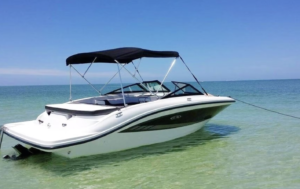 Of course, we are famously called the “Land of 10,000 Lakes,” so it stands to reason. But Minnesota actually has 14,444 lakes of 10 acres or more, according to the U.S. Geological Survey. No wonder we love boating!
Of course, we are famously called the “Land of 10,000 Lakes,” so it stands to reason. But Minnesota actually has 14,444 lakes of 10 acres or more, according to the U.S. Geological Survey. No wonder we love boating!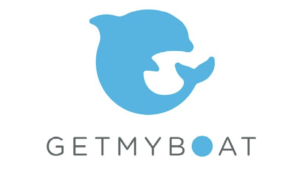 Airbnb of boats. Do people stay overnight in boats? Well, only the bigger ones that have such accommodations, I guess. But you can’t blame the company for liking the comparison. Most of their rentals, I’m suspecting, are a day at a time — though I’ve noticed week-long rentals are offered by some owners. But, surely, living on a big boat for a month while working remotely would be an intriguing escape for some digital nomads, no?
Airbnb of boats. Do people stay overnight in boats? Well, only the bigger ones that have such accommodations, I guess. But you can’t blame the company for liking the comparison. Most of their rentals, I’m suspecting, are a day at a time — though I’ve noticed week-long rentals are offered by some owners. But, surely, living on a big boat for a month while working remotely would be an intriguing escape for some digital nomads, no? GetMyBoat has a mobile app for iOS and Android that enables users to rent a boat right from their phones. In the news release, the company said, “Our mission is to make the joys of boating more affordable and accessible, and with this growth capital from Yanmar, we will be able to fully realize that dream.”
GetMyBoat has a mobile app for iOS and Android that enables users to rent a boat right from their phones. In the news release, the company said, “Our mission is to make the joys of boating more affordable and accessible, and with this growth capital from Yanmar, we will be able to fully realize that dream.”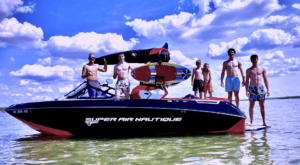 “I’m in close contact with some of our owners here,” said Val Streif, marketing manager, based in Northeast Minneapolis. “Many of them have reported really great stories of growing their side hustle businesses, renting out their boats in the summer months or serving as full-time boat captains for their rentals.” Hmmm, is this a way to ease the payment pressure from those 15-year boat loans many have to take out to live their dreams on the water?
“I’m in close contact with some of our owners here,” said Val Streif, marketing manager, based in Northeast Minneapolis. “Many of them have reported really great stories of growing their side hustle businesses, renting out their boats in the summer months or serving as full-time boat captains for their rentals.” Hmmm, is this a way to ease the payment pressure from those 15-year boat loans many have to take out to live their dreams on the water?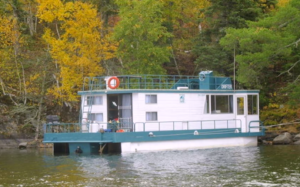 Raf Collado. Quite the non-standard startup story! The company launched in 2013, and Yanmar invested for the first round in 2018.
Raf Collado. Quite the non-standard startup story! The company launched in 2013, and Yanmar invested for the first round in 2018.
 say on the boat listing either ‘Captain is Included’, ‘Captain is Optional’, or ‘Captain is Not Included’.”
say on the boat listing either ‘Captain is Included’, ‘Captain is Optional’, or ‘Captain is Not Included’.”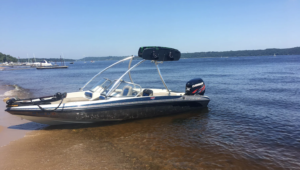 customers on the platform without a licensed captain.”
customers on the platform without a licensed captain.”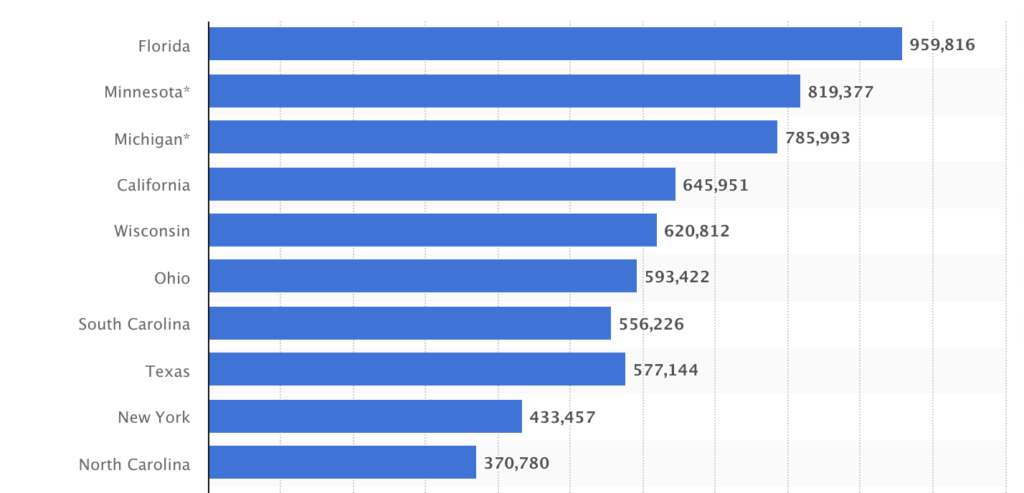
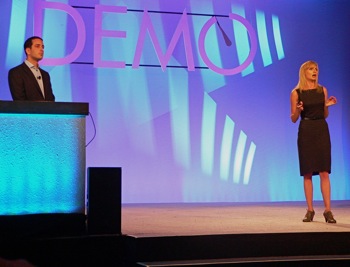
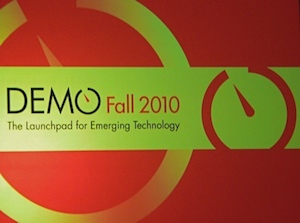




 Metcalf: I presented the class with a very detailed look at Flyspy, from high–level concepts to detailed aspects of the business model and technology costs. Remember, the class was going to produce a business plan with an emphasis on IT management. The major points that I hit on were:
Metcalf: I presented the class with a very detailed look at Flyspy, from high–level concepts to detailed aspects of the business model and technology costs. Remember, the class was going to produce a business plan with an emphasis on IT management. The major points that I hit on were: I’d read the original
I’d read the original  And on top of that, with Flyspy, I was able to immediately identify with what it could do for me personally as well. How many startups have an immediate bond with consumers like that?
And on top of that, with Flyspy, I was able to immediately identify with what it could do for me personally as well. How many startups have an immediate bond with consumers like that? 
Recent Comments